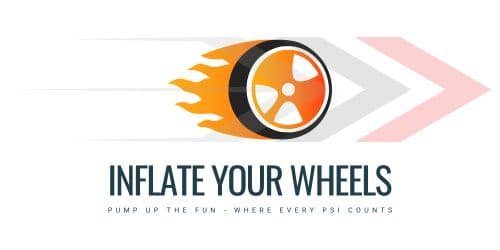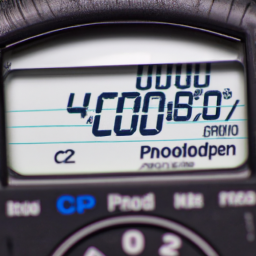Ladies and gentlemen, we bring you a burning question that has left many car owners scratching their heads: “What PSI Should My Tires Be At?” Picture this: the open road, wind in your hair, and a smooth ride beneath you. But before you embark on your next adventure, there’s one crucial detail that demands your attention – tire pressure.
Tires play a vital role in ensuring a safe and comfortable journey, but how do you determine the perfect PSI (pounds per square inch) for your tires? Join us as we unravel this mystery and equip you with the knowledge to keep your wheels rolling smoothly.
What PSI Should My Tires Be At?
Table of Contents

Why the Right Tire Pressure is Important
Ensures Safety: Maintaining the proper tire pressure is essential for ensuring our safety on the road. When our tires are inflated to the correct pressure, they provide optimal traction, allowing us to maintain control of our vehicle during maneuvers such as braking and turning. On the other hand, if our tires are overinflated or underinflated, it can significantly compromise our ability to control the vehicle, increasing the risk of accidents.
Improves Fuel Efficiency: Keeping our tires at the recommended pressure can also have a positive impact on our fuel efficiency. When our tires are properly inflated, the rolling resistance is minimized, which means our vehicle doesn’t have to work as hard to move forward. This can result in better gas mileage and ultimately save us money at the pump.
Enhances Tire Life: The lifespan of our tires can also be extended when we maintain the right tire pressure. Overinflated tires tend to wear out the center tread faster, while underinflated tires cause more wear on the outer edges. By keeping our tires properly inflated, we ensure a more even distribution of the tread wear, prolonging their overall life.
Optimizes Vehicle Performance: Lastly, maintaining the correct tire pressure optimizes the overall performance of our vehicle. Whether we’re driving a car, SUV, truck, or any other vehicle, ensuring that the tires are at the recommended pressure helps to provide a smoother and more comfortable ride. It also allows the suspension and braking systems to function at their best, enhancing overall handling and responsiveness.
Understanding Tire Pressure
What is PSI?: PSI stands for pounds per square inch and is the unit of measurement used to quantify tire pressure. It represents the amount of air pressure inside a tire.
Recommended PSI: The recommended tire pressure for our vehicle can vary depending on factors such as the make and model of the vehicle, the type of tires we have installed, and the load we are carrying. It’s crucial to consult our vehicle’s owner’s manual or the tire placard on the driver’s side door jamb for the specific recommended PSI.
Checking Tire Pressure: Regularly checking our tire pressure is essential to ensure that they are within the recommended range. This can be done using a tire pressure gauge, which is a simple tool that measures the air pressure inside the tires. It is important to check the tire pressure when the tires are cold, as the pressure can increase as the tires heat up during driving.
Factors Affecting Tire Pressure: Various factors can affect our tire pressure, including temperature changes, driving conditions, and the gradual loss of air over time. It’s important to be aware of these factors and monitor our tire pressure regularly to ensure it remains within the proper range.
Determining the Correct PSI
Consulting the Owner’s Manual: The first and most reliable source for determining the correct tire pressure for our vehicle is the owner’s manual. It provides specific information tailored to our make and model, taking into account any unique requirements.
Tire Sidewall Information: In addition to the owner’s manual, we can also find information regarding the recommended tire pressure on the sidewall of our tires. However, it’s essential to note that this information is specific to the tires themselves and not necessarily the ideal pressure for our vehicle. Therefore, it’s best to rely on the owner’s manual for accurate PSI recommendations.
Online Resources: There are also several online resources available that provide general guidelines for tire pressure based on the vehicle’s make and model. These resources can be helpful in providing a starting point, but it’s important to cross-reference the information with the owner’s manual for the most accurate recommendations.
Professional Assistance: If we are unsure about determining the correct PSI for our vehicle, it’s always a good idea to seek professional assistance. Tire experts or mechanics can accurately assess our vehicle’s requirements and provide us with the correct tire pressure specifications.
Adjusting Tire Pressure
Using a Tire Pressure Gauge: To adjust our tire pressure, we first need to know the current pressure. This can be done using a tire pressure gauge. Simply remove the valve cap, firmly press the gauge onto the valve stem, and read the pressure measurement displayed on the gauge.
Inflating Tires: If the tire pressure is below the recommended PSI, we need to inflate the tires. This can be done at a local gas station or using a portable air compressor. Be sure to match the pressure as closely as possible to the recommended PSI and check the pressure again after inflating to ensure it’s within the correct range.
Deflating Tires: If the tire pressure is too high, we need to release some air to bring it down to the recommended level. This can be done by pressing the valve stem with a pen or the back of the pressure gauge. It’s important to release small amounts of air at a time and re-check the pressure frequently to avoid deflating the tire too much.
Effects of Overinflated Tires
Reduced Traction: Overinflated tires have a smaller contact area with the road, which can reduce traction and make it more difficult to maintain control of our vehicle. This can be particularly dangerous in wet or slippery road conditions.
Uneven Tire Wear: Overinflated tires tend to wear out faster in the center of the tread, leading to uneven tire wear. This can result in decreased tire performance and the need for premature replacement.
Harsh Ride: Overinflated tires can also result in a harsher and less comfortable ride. The excess air pressure causes the tires to be stiffer, transmitting more shocks and vibrations from the road to the vehicle’s suspension.
Increased Risk of Damage: When our tires are overinflated, they become more susceptible to damage from road hazards such as potholes or debris. The extra stiffness can make the tire more prone to punctures or even blowouts.
Effects of Underinflated Tires
Reduced Fuel Efficiency: Underinflated tires can significantly impact our vehicle’s fuel efficiency. When the tire pressure is too low, it increases the rolling resistance, causing the engine to work harder to propel the vehicle forward. This results in lower gas mileage and increased fuel consumption.
Poor Handling: Underinflated tires affect our vehicle’s handling and maneuverability. They can make the steering feel sluggish and less responsive, compromising our ability to safely navigate corners or make sudden turns.
Reduced Tire Life: Just like overinflated tires, underinflated tires also wear out unevenly. In this case, the outer edges of the tread tend to wear out faster. This uneven wear decreases the overall lifespan of the tires and increases the frequency of tire replacements.
Increased Safety Risk: Underinflated tires can lead to a higher risk of accidents. They reduce the traction and stability of our vehicle, particularly during emergency maneuvers or sudden braking. It’s crucial to maintain the correct tire pressure to ensure our safety on the road.
Considerations for Different Conditions
Cold Weather: As the temperature drops, the air inside our tires contracts, causing a decrease in tire pressure. Cold weather can lead to underinflated tires, making it essential to check and adjust the tire pressure more frequently during winter months.
Hot Weather: Conversely, hot weather can cause the air inside our tires to expand, leading to overinflated tires. It’s important to monitor the tire pressure more closely during hot weather and adjust as necessary to maintain the recommended PSI.
Heavy Load: When carrying a heavy load, such as passengers or cargo, the weight on each tire increases. This additional weight can cause the tire to compress more, leading to higher heat buildup and potential overinflation. It’s crucial to consult the owner’s manual or seek professional advice to determine the appropriate PSI when carrying a heavy load.
Towing: Similarly, when towing a trailer or other heavy objects, the additional weight places extra stress on the tires. This can lead to increased tire pressure, especially on the rear tires. It’s important to adjust the tire pressure accordingly to ensure safe towing.
Tips for Maintaining the Right Tire Pressure
Regular Pressure Checks: Make it a habit to check our tire pressure at least once a month and before long trips. This regular maintenance routine ensures that our tires remain at the correct pressure and allows us to detect any potential issues early on.
Adjustment Before Long Trips: Before embarking on a long journey, it’s crucial to check and adjust our tire pressure. Long trips can cause the tires to heat up and the pressure to increase, so starting with the correct pressure can help mitigate any potential issues during the journey.
Monitoring Tire Pressure during Seasonal Changes: As the seasons change, it’s important to monitor our tire pressure more closely. Temperature fluctuations can cause significant changes in tire pressure. By regularly checking and adjusting the pressure, we can ensure the optimal performance and safety of our tires.
Inspecting Tires for Damage or Wear: In addition to maintaining the right tire pressure, it’s essential to inspect our tires regularly for any damage, wear, or signs of aging. This includes checking for tread depth, sidewall integrity, and any visible punctures. If we notice any issues, it’s important to have them addressed promptly by a professional.
Conclusion
Ensuring that our tires are properly inflated to the recommended pressure is crucial for our safety, fuel efficiency, and overall vehicle performance. By understanding the importance of tire pressure, learning how to determine the correct PSI, and adopting regular maintenance habits, we can protect ourselves and our vehicles from unnecessary risks and ensure a smoother, more enjoyable driving experience. So let’s make it a priority to regularly check our tire pressure, adjust when necessary, and prioritize the overall health and well-being of our tires. Happy driving!


